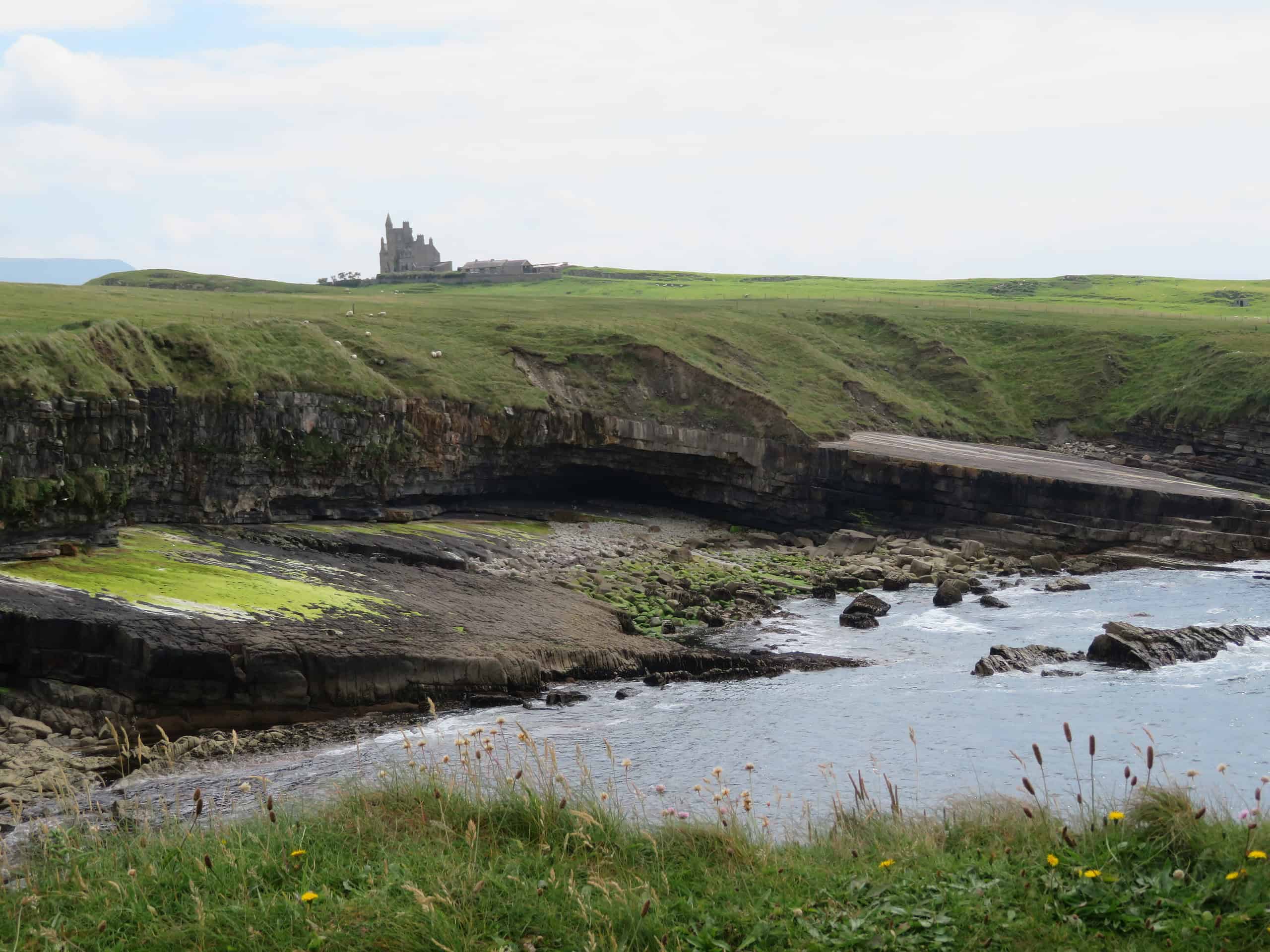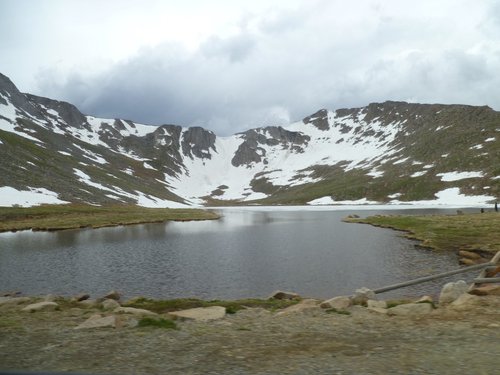Is Ireland Worth Visiting in 2024?
While the Emerald Isle is on many people’s bucket lists, you may be someone wondering if Ireland is worth visiting and the hype associated with it. After traveling to Ireland more than once, I can say it is a place I could easily keep returning to.
In this post, I’ll give you 7 reasons why you may fall in love with Ireland as well as what you need to know to help you plan your trip there.
This post contains affiliate links. As an Amazon Associate when you click on a link and make a purchase, I earn a small commission at no cost to you.
Is Ireland Worth Visiting? 7 Reasons You Should Add it to Your Bucket List
After just one visit, Ireland captured my heart. So, obviously, I believe that it’s worth a visit. I’ve since returned to Ireland and am already planning on when I can go back. However, if you are still on the fence about whether to travel to Ireland, here are some reasons why you may enjoy a trip there.
1. Culture/History
As an American, I’m always baffled at how much history Europe and other areas have to offer compared to ours. Ireland has loads of stories to tell that will help you understand its unique culture.
During your visit, you can learn how Ireland fought for its independence while holding on to its unique heritage, the troubles, the building of the Titanic, and so much more.

For example, when you visit Newgrange, you will find out about this mysterious ancient structure and its possible importance. It’s often referred to as the Stonehenge of Ireland because it too aligns with the solstices.
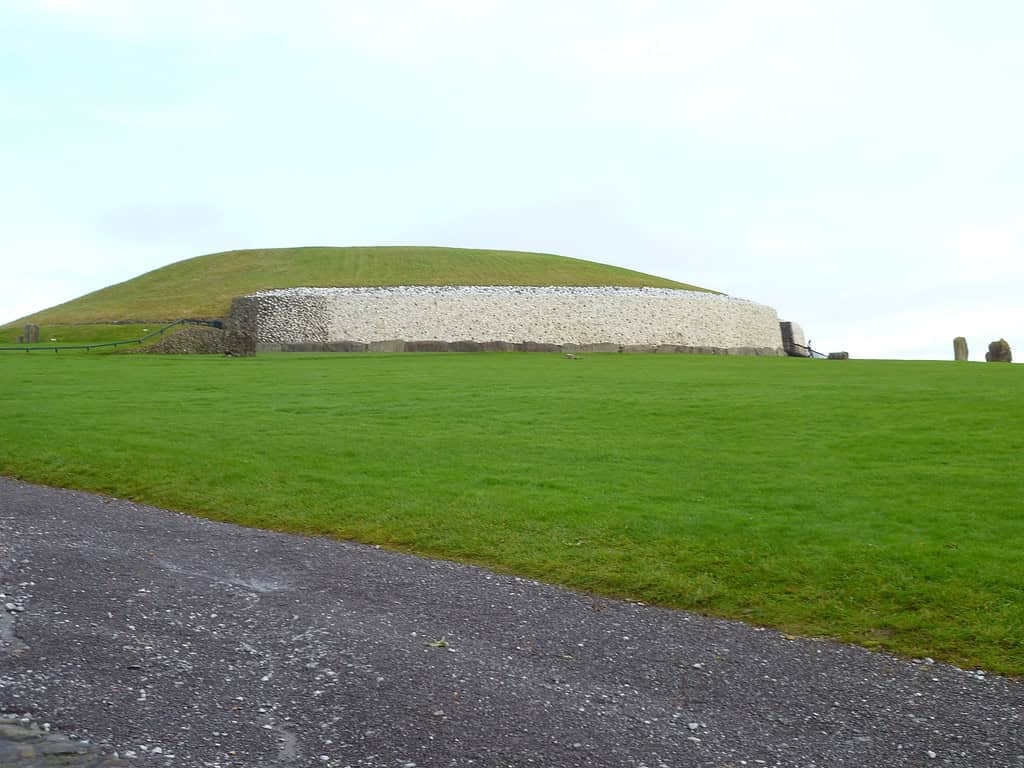
Furthermore, you will have the opportunity to learn about the infamous potato famine and what led to so many Irish emigrating to the United States and elsewhere.
2. Music
Ireland is a music lovers paradise. It’s so easy to hear traditional and local music in the pubs at night. Any performance is sure to have you tapping your foot and ready to dance.
From lively jigs, to tales of legends and folklore, to love songs, to music about politics and history, you’re sure to hear it all. It’s just another way to immerse yourself in the culture during your visit.
During my last trip, I was even lucky enough to learn more about how traditional Irish music survived during the British occupation of Ireland. It was truly fascinating to find out that towns such as Dingle, Donegal, and Connemara helped keep this treasure alive since the British had little interest in these rocky areas.
Then in 1792, a music festival was held in Belfast to document and preserve these tunes for future generations. A performer and historian at St. John’s Castle then played me a few songs. It was a highlight of my trip.
3. Breathtaking Scenery
The views along the Wild Atlantic Way and the west coast of Ireland are absolutely stunning. So much so, that it’s incredibly hard to take a bad photo while you’re there.
The Ring of Kerry offers mountain, lake, and coastal views while the Dingle Peninsula has beautiful beaches and shorelines. The cliffs along the coast never get old and there is plenty of opportunity for you to get out of your vehicle and explore.
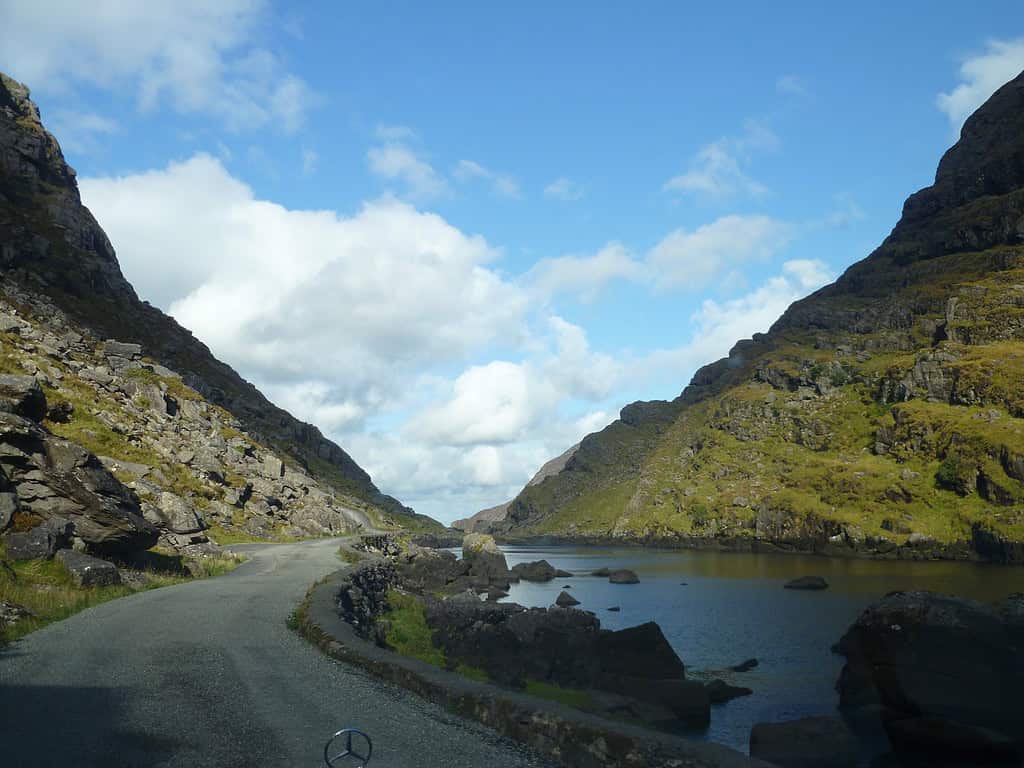
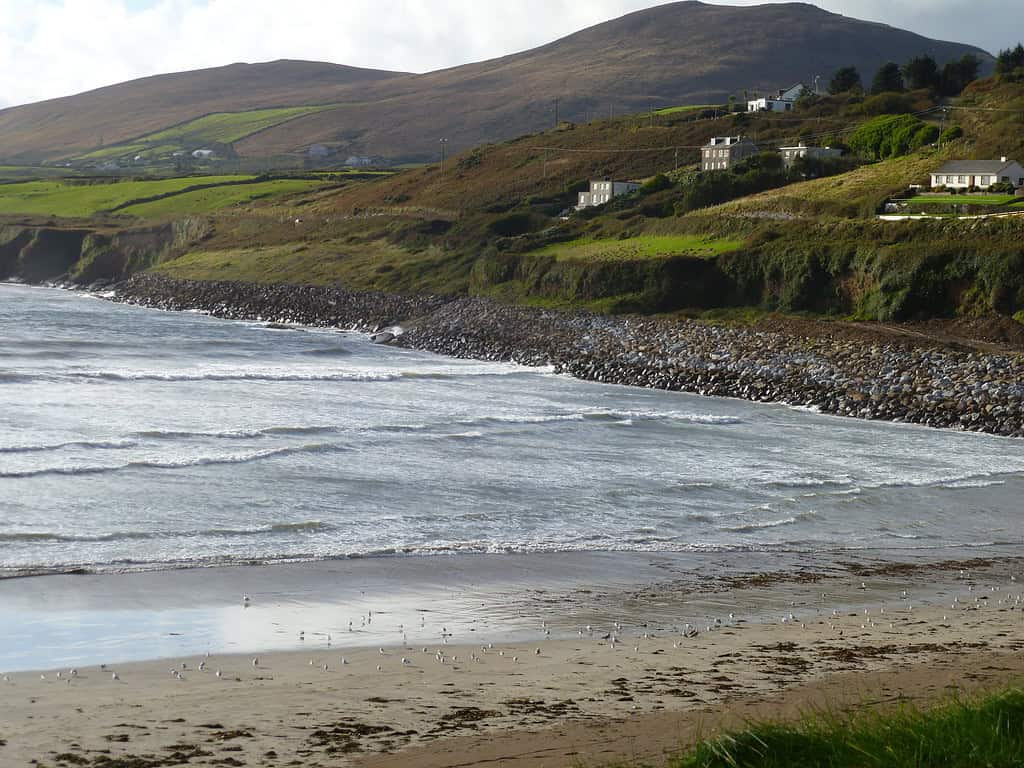
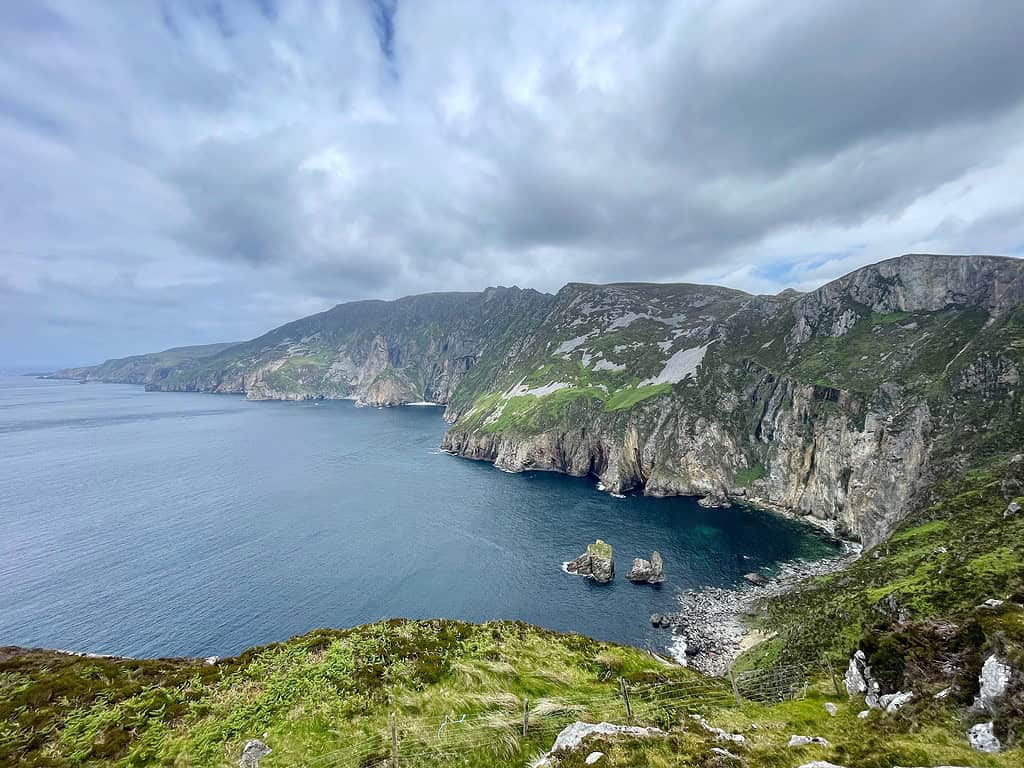
It’s truly a photographers’ and hikers’ dream come true with a variety of options (some accessible) and levels of difficulty. And, if you want to explore some of Ireland’s rocky landscape, then the Burren is a fantastic place to experience.
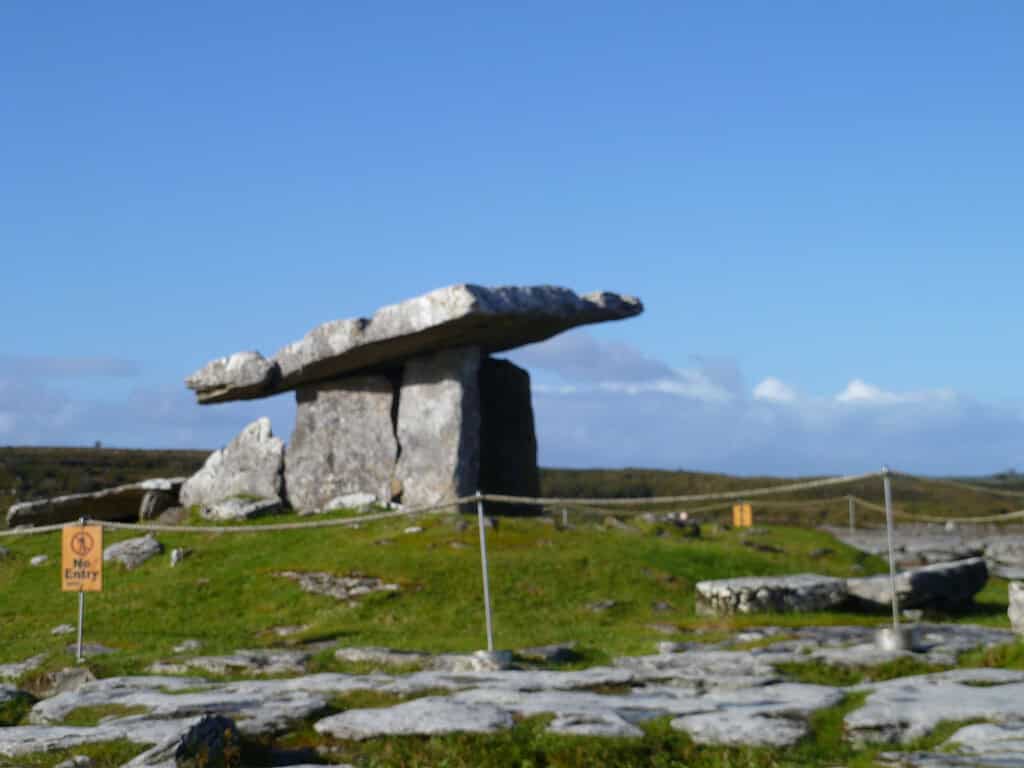
4. Friendly People
One of the many things I love about Ireland is how friendly the people are. When lost, they will not only offer you directions but sometimes actually escort you to where you are going.
Additionally, it’s not uncommon for them to strike up a conversation or even invite you to watch them shear their sheep. Yes, this actually happened to me on my last trip. We were driving and had to stop due to a sheep traffic jam as they were on their way to get trimmed.
The farmers invited us to pull along side the road to watch the process. They then explained what happens to the wool, why shearing is important, and introduced us to their herd. Since I was traveling in Ireland with kids (well young teens) it was a wonderful and educational opportunity for them to experience.

I always say that travel isn’t just about where you go but the people you meet along the way. And in Ireland, it’s so easy to meet wonderful people that will add to your experience.
5. Incredible Castles
There’s just something about visiting a castle that brings out the little girl (or boy) inside of you. As you wander through the grounds and/or rooms and imagine what life must have been like as you admire the architecture.
Once you learn more about the history of the property, it adds to the story of where you’re at. And, if you’re lucky and it’s within your budget, sometimes you can even spend the night (thereby fulfilling a childhood dream).
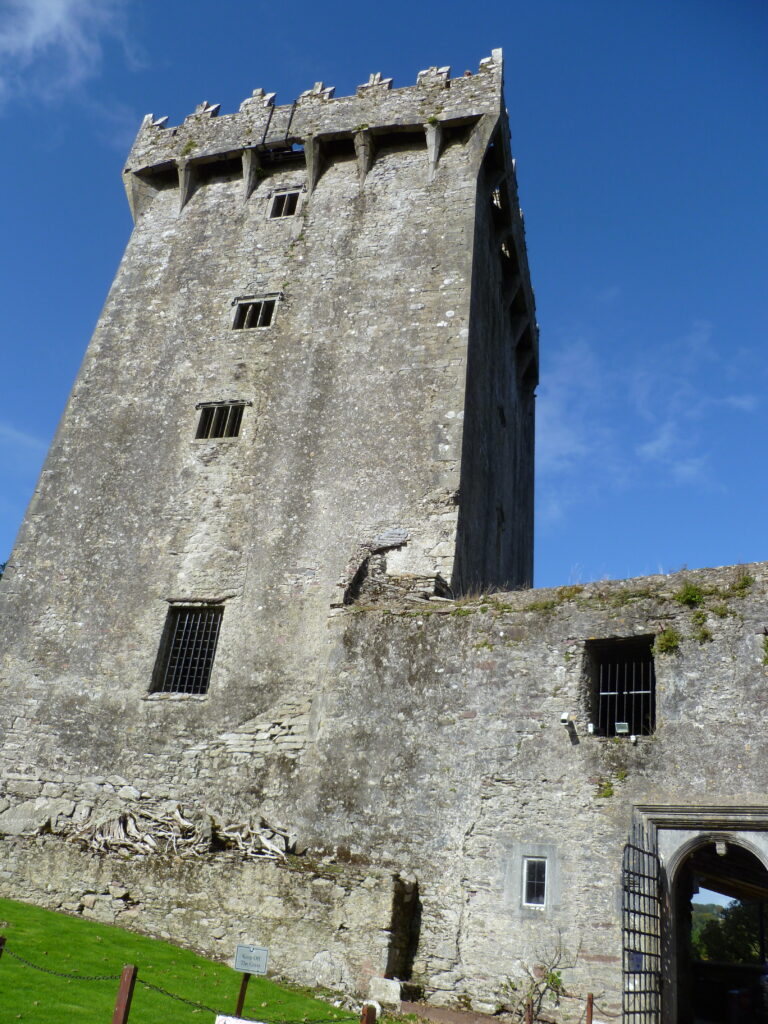
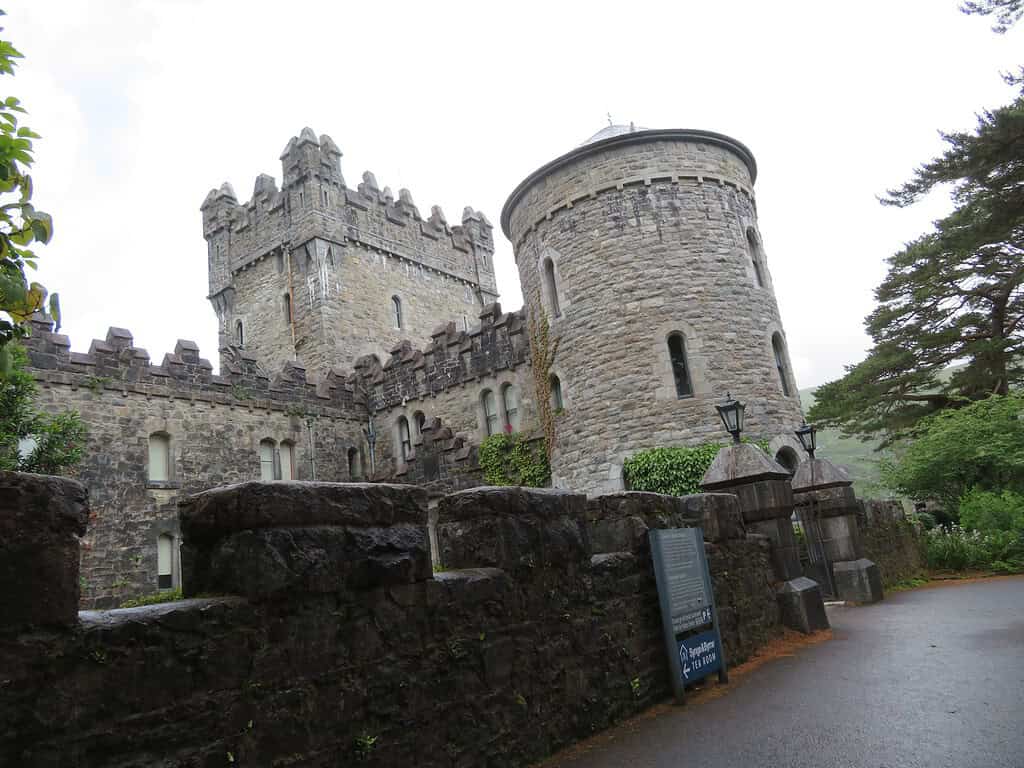
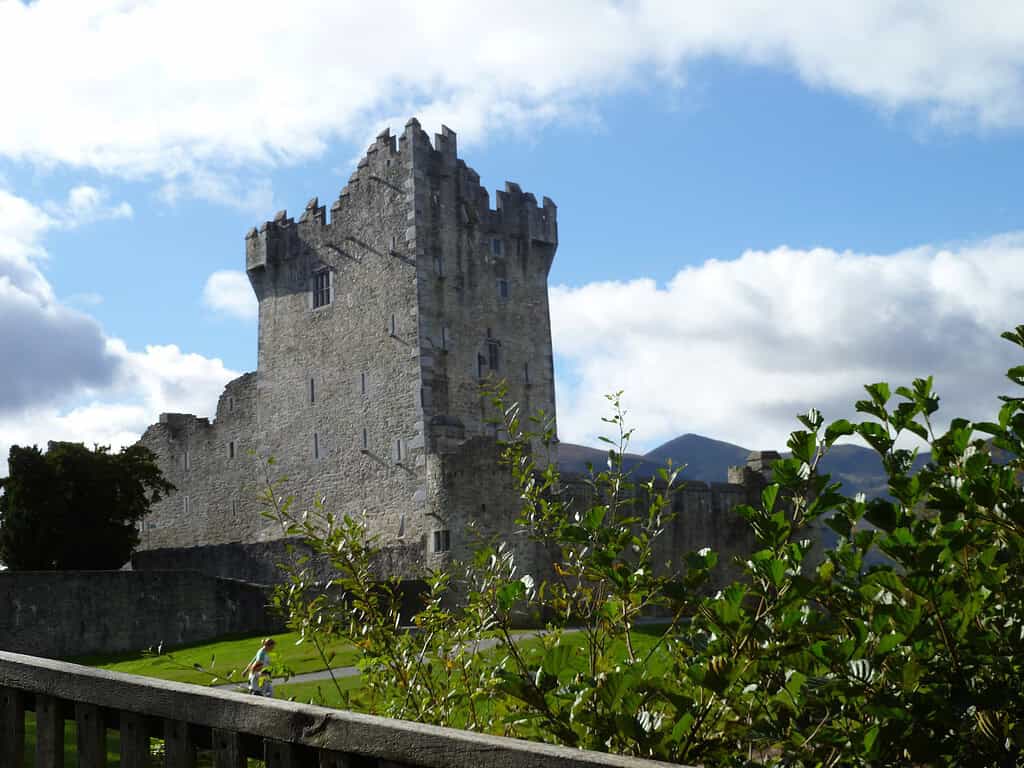
Some of the castles in Ireland are even partially accessible to wheelchair users. Even the ones that are not accessible (like Blarney Castle), are still worth visiting to see the exterior and the often beautiful gardens that surround the property.
The castle at Glenveagh National Park, St. John’s Castle in Limerick, and Ross Castle in Killarney National Park are all partially accessible.
6. The Spirits
No, I’m not talking about ghosts. Although given Ireland’s history, it wouldn’t surprise me if you had a few eerie encounters.
Instead, I’m talking about alcohol. Ireland is most famous for Guinness and Jameson Irish Whiskey. If you are a fan of indulging in a pint or shot, then Ireland is a wonderful option.
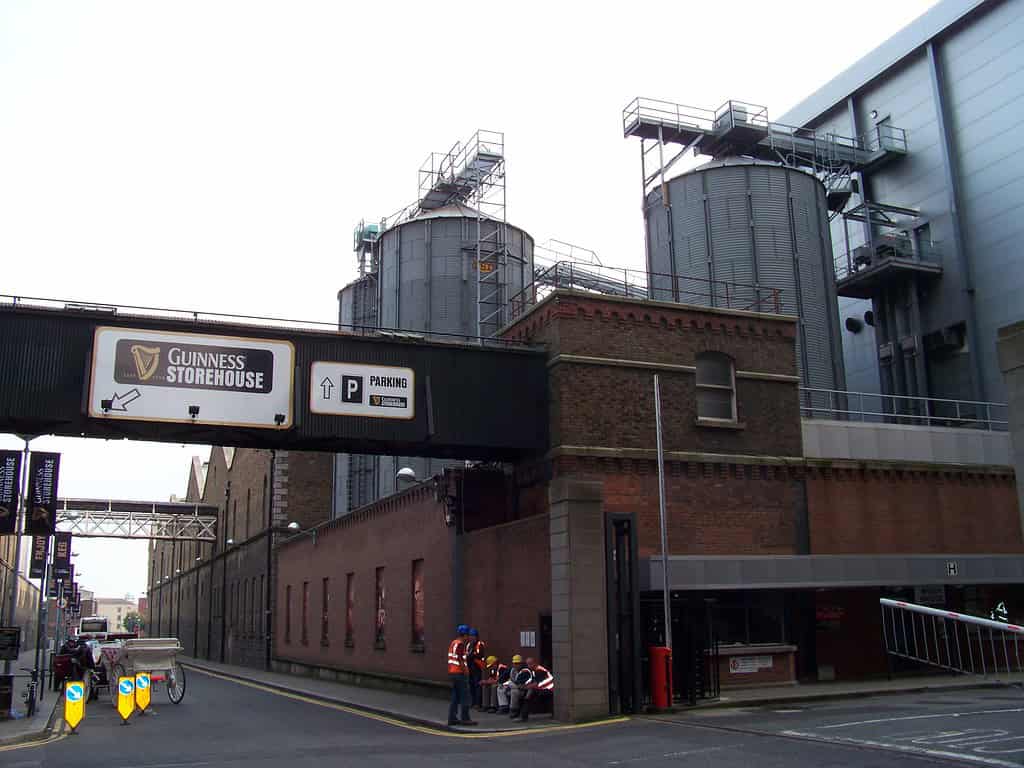
Not only do these famous drinks taste a bit different in the country in which they are made, but you can also learn more about how they are created.
The Guinness Factory Tour is very informative and comes with a glass of the dark stuff. You can enjoy this iconic brew while taking in the scenery of Dublin in the bar that has 360-degree views of the city.
👉 Check prices and pre-book your tickets to the Guinness Storehouse in Dublin by clicking here.
Likewise, you can also participate in the Jameson Distillery Tour where you will learn about the history of the brand, how this iconic whiskey is made, and enjoy a guided tasting tour. At the end, you also receive a complimentary drink.
👉 Check pricing and availability for this popular tour by clicking here.
7. Fantastic Road Trips
Driving through the countryside (especially along the coast) has endless views that you’ll want to photograph. As a result, as far as road trips go, it doesn’t get much better.
While some of the back roads can be narrow, they are also often less crowded and help you escape the large tourist buses. This allows you to connect more with nature and the people making for a more personal and enjoyable trip.
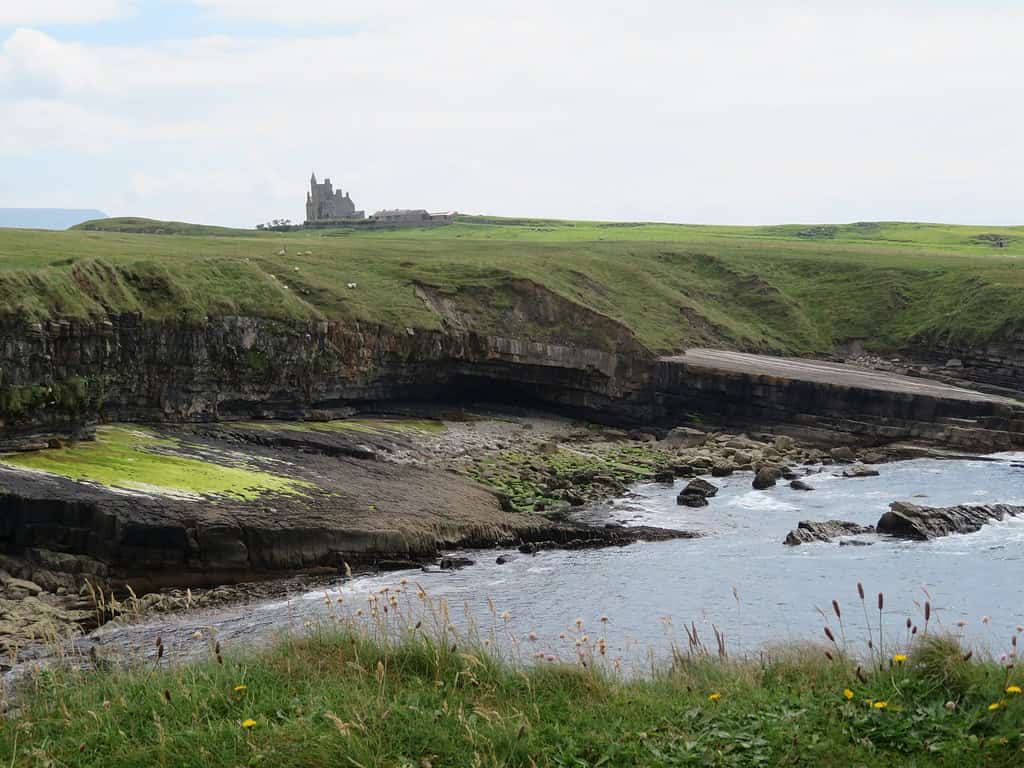
During an Ireland road trip itinerary, you can visit small towns and hidden gems at your own pace while having relaxed conversations with local residents. I particularly enjoyed having the option to make impromptu stops if I saw something interesting that caught my eye.

Is Ireland Worth Visiting for Wheelchair Users and People with Mobility Problems?
Yes! As someone who has visited Ireland both as a wheelchair user and with better (but limited) mobility, I can absolutely say it’s worth visiting.
While it’s not perfect (I haven’t found a destination that 100% accessible to everyone), I was still able to see the popular sights and have an amazing experience. Actually, I’m already planning my next trip to this incredible country.
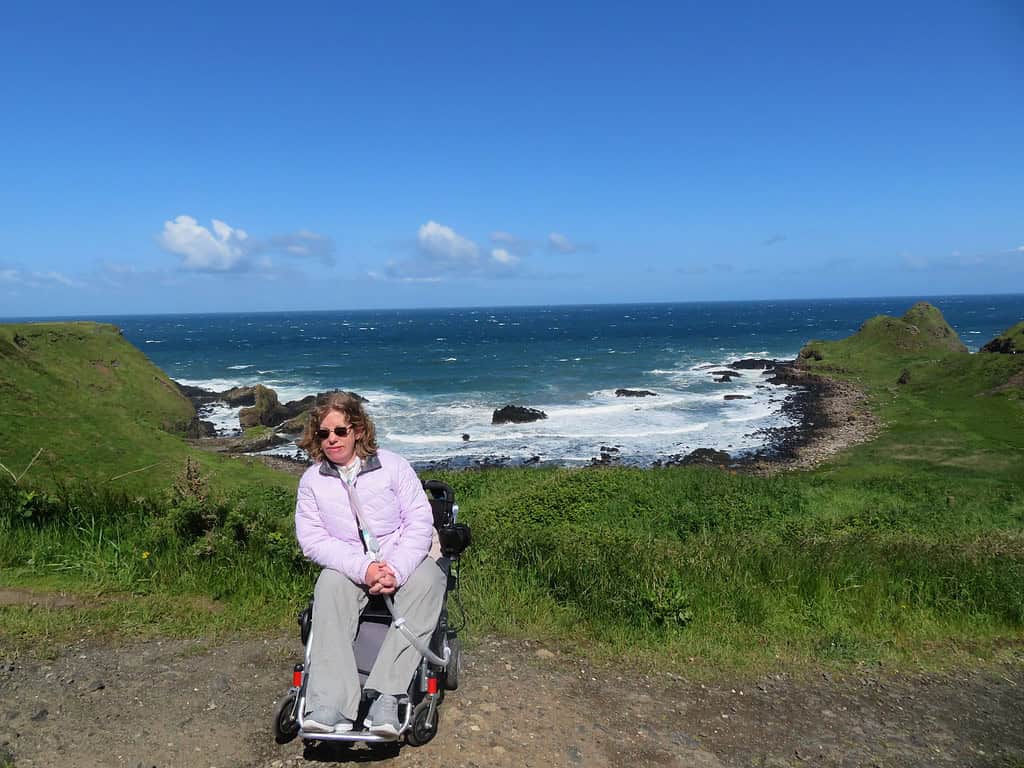
Some of the main obstacles to accessibility I experienced were uneven terrain (in some areas), lack of accessible bathrooms in more rural and natural areas, and only partial accessibility at some historic sights.
Top Places to Visit in Ireland
Ready to start planning your trip? Here are some of the top places to visit that you’ll want to add to your Ireland bucket list.
- Giants Causeway
- Donegal
- Wild Atlantic Way
- Glenveagh National Park
- Dingle Peninsula
- Ring of Kerry
- Cliffs of Moher
- Aran Islands
- Kilkee Cliffs
- Newgrange
- Blarney Castle
- Belfast
- Dublin
- Ireland’s Waterfalls
- Skellig Island
- Connemara National Park
When to Go to Ireland
I have traveled to Ireland in both October and June as this is just off of the peak season but still has reasonable weather. As a result, I can often find cheap flights and fewer crowds. June can also historically be one of the driest months in the southern portion of Ireland.
If you are like me and want to find the best travel deals and fewer tourists, plan to travel between March and the beginning of June or from September to November.
Where to Stay in Ireland
I never stay in one place in Ireland (there’s just so much to see). Although I do at least try to spend a few days in one area.
As a result, I have stayed at several properties throughout the country. I’ve listed some of my top recommendations below.
Since this is an accessible travel blog, I have focused my suggestions on wheelchair-accessible hotels in Ireland. Although chain hotels will be your best bet for accessibility, there may be some more local hotels (like Lough Eske Castle) that may also meet your needs.
Since accessibility needs vary, it’s always important to contact the hotel directly for more specific information.
However, if you have some mobility or are not disabled, I also highly recommend checking out Bed and Breakfast options. They are comfortable and provide a more personalized and homey feel to them. My favorite I stayed at (when I had better mobility) is listed as number four.
Premier Inn
Premier Inn is a hotel chain based in the UK and Europe. They offer comfortable accessible rooms that have well-designed accessible bathrooms. Typically there is also a restaurant onsite and you have the option to get breakfast included in your stay.
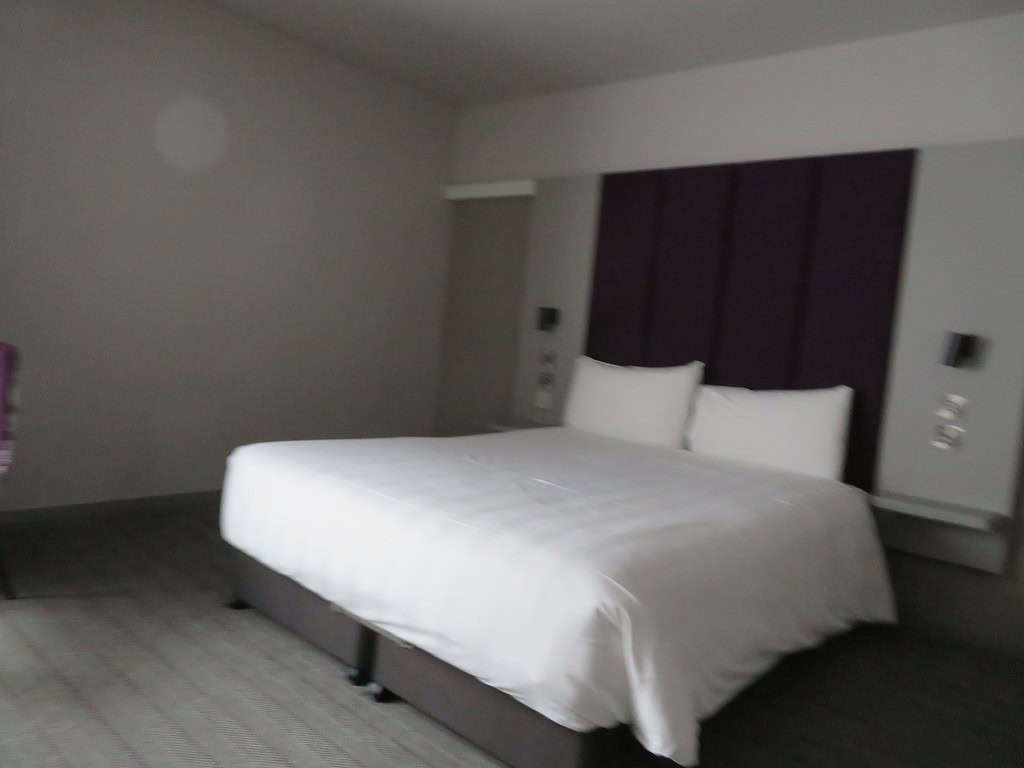
I stayed at Premier Inn’s in Belfast and Londonderry and had a good experience in both. However, they are located throughout Ireland, so make sure to check to see if there is one near where you want to stay.
👉 Check for Premier Inn pricing and availability by clicking here.
Lough Eske Castle

Located in county Donegal, this spectacular castle offers wheelchair-accessible rooms that may work for some people. Rooms are spacious and have a bathroom with a roll-in shower, grab bars, and a shower seat. Lifts throughout the property make for easy navigation on a mobility device.
👉 Check pricing and availability by clicking here.
Limerick Strand Hotel
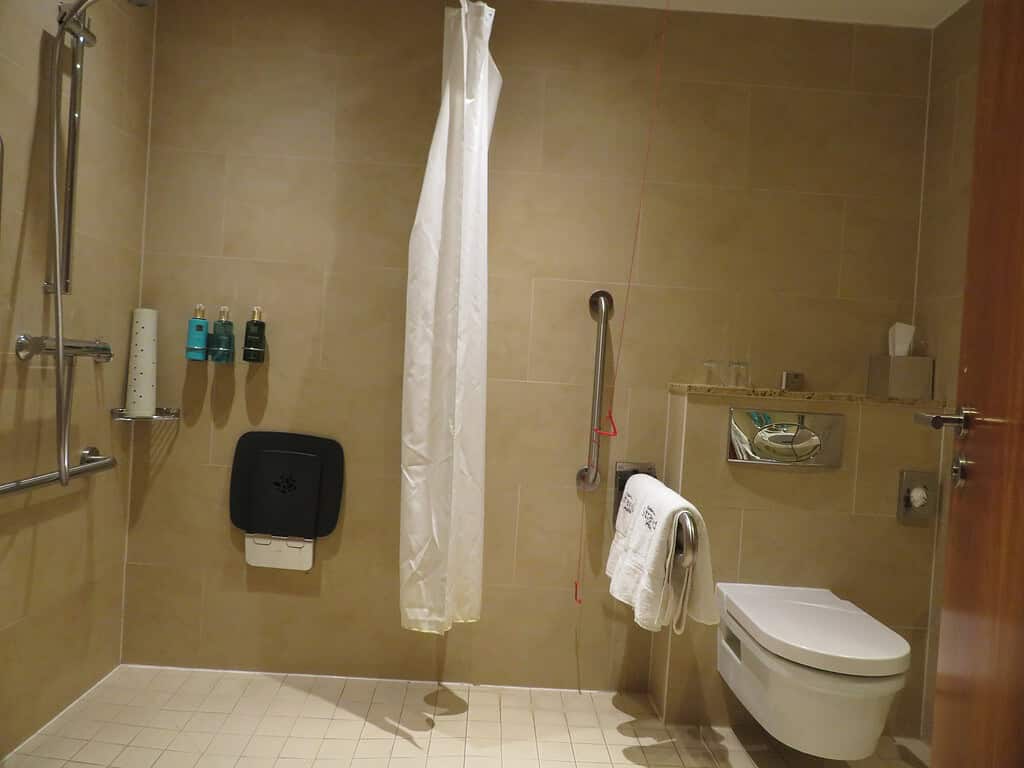
Located a short drive from Shannon Airport, this property is a great base for exploring popular sights such as the Cliffs of Moher, Kilkee Cliffs, St. John’s Castle, and more. Their accessible rooms have roll-in showers, a shower seat, grab bars, and room to maneuver in your wheelchair.
👉 Check pricing and availability by clicking here.
Pax Guest House
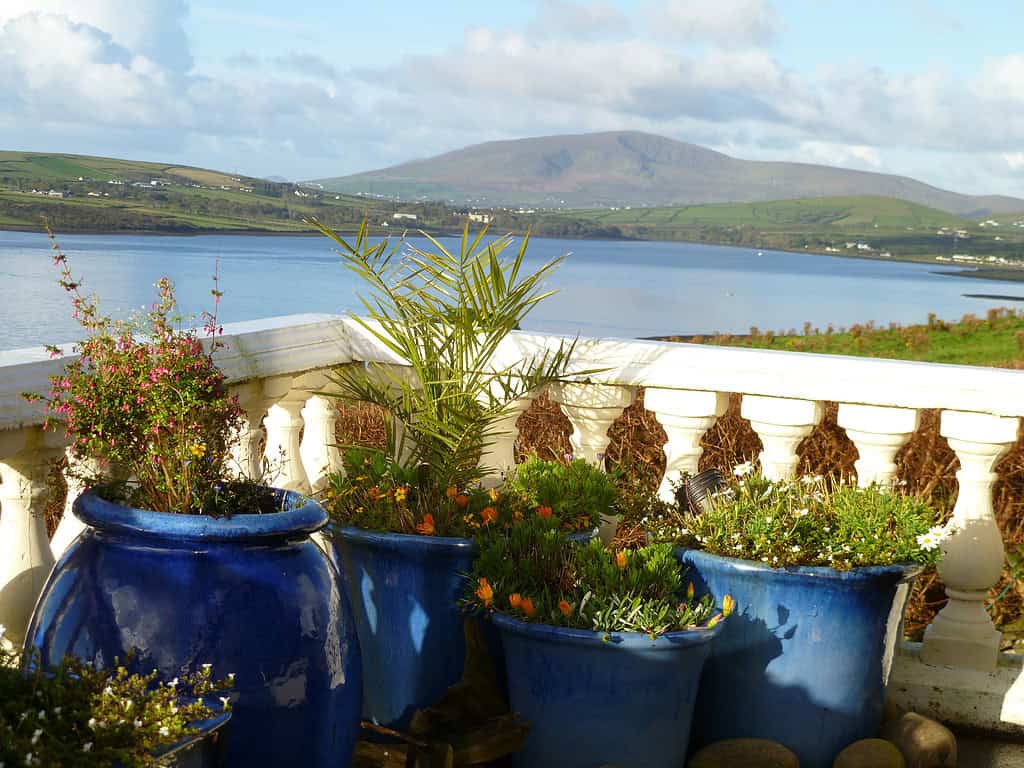
This a charming B&B that will make you feel right at home. It offers comfortable rooms that are best suited for people with some mobility, a terrace with amazing views, and personal touches from friendly staff.
Its location on the Dingle Peninsula makes for convenient exploration of the area.
👉 Check pricing and availability for your travel dates by clicking here.
What I Wish I Knew Before Going to Ireland: My Top 5 Tips
While I have plenty of Ireland travel tips, here are the top 5 things I wish I had known before going to Ireland to help guide you with planning your trip.
✔️ The Real Ireland is in its Countryside
Cities are great, don’t get me wrong. However, if you really want to experience the best of Ireland, make sure to get out into the countryside. I’m partial to the west coast and the Wild Atlantic Way.
In both of these areas, you’ll experience smaller towns, fantastic scenery, and the local charm that Ireland has to offer.
✔️ Be Flexible and Don’t Overpack Your Itinerary
Since Ireland has so much to see and do, it’s really easy to cram your itinerary full of things. However, this style of travel doesn’t really embrace the Irish culture or allow you time to stop by unexpected and interesting sights.
For my last trip, I tried to limit 2-3 activities per day and at times this still felt packed. Remember, there’s no way to see everything in Ireland in just one trip so take time to really enjoy the things you will get to see and prioritize those based on your interests.
✔️ Allow Longer Than You Think to Drive
While Google Maps may indicate that attractions are only an hour from each other, the actual drive time may take longer. Country roads can be narrow and require you to slow down and you may even encounter an Irish traffic jam (aka sheep blocking the road).
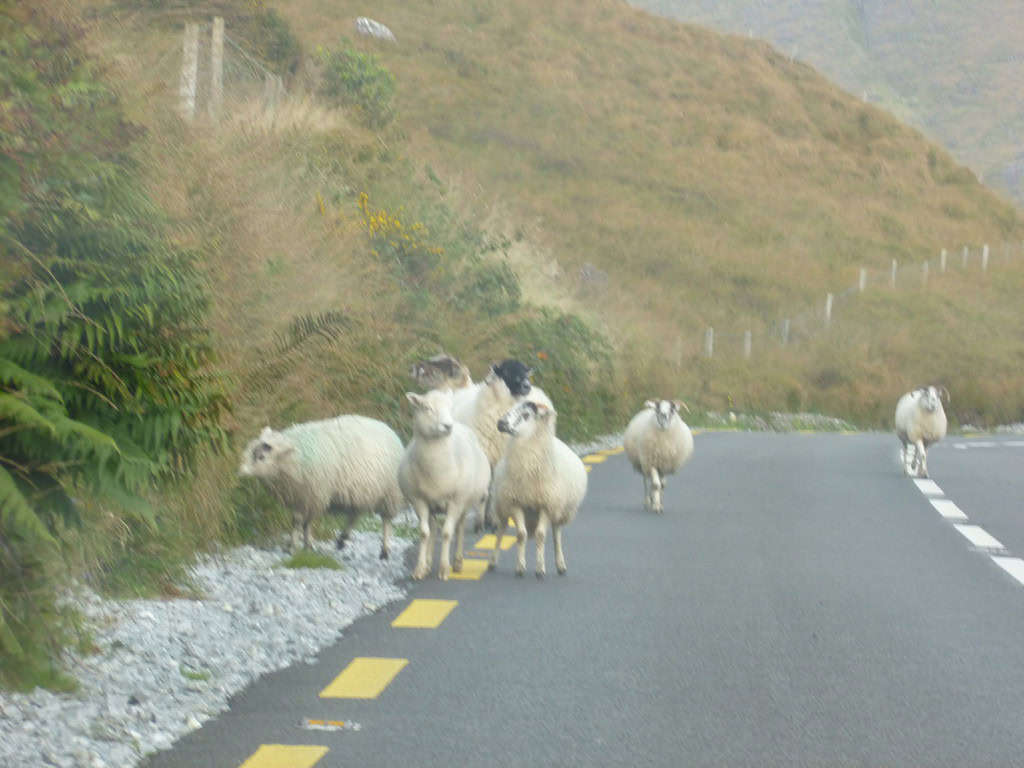
Don’t stress yourself out by having too much on your schedule and not factoring in realistic drive times (which can vary). Part of the wonderful thing about Ireland is slowing down and enjoying the scenery.
✔️ You Can Experience 3 Seasons in One Day
I quickly learned that the weather in Ireland is unpredictable. You can have sun, rain, and strong winds all in the same day. Additionally, there’s a saying that if you don’t like the weather, wait 15 minutes as it’s likely to change.
This is why it is important to be prepared with rain gear, layers, and a jacket. Also, please don’t let the rain stop you from enjoying Ireland. After all, it’s part of the experience!
✔️ Ireland is More Accessible Than Expected
When trying to plan my trip, I found very little information on accessibility in Ireland. This led me to wonder what I’d be able to do and how accommodating it would be for wheelchair users and people with limited mobility.
I’m happy to report that there Ireland is quite accessible! I was able to see many of the most popular tourist sights as well as some that are lesser known. I actually loved both of my trips to the Emerald Isle and am in the process of planning another.
Ireland FAQs
➡️ Is Ireland Worth Visiting on a Cruise?
While I love cruising as a wheelchair user, it really isn’t the best way to see Ireland. Ships only stop in two or three ports (Dublin, Belfast, and Cork) for a day which really limits what you experience.
If this is your preferred method of travel, just know you’ll likely not get to see the countryside and what I refer to as the “real” Ireland. However, it will give you just enough of a taste of the country that you’ll fall in love with it and decide to return with a land trip.
➡️ Is Ireland Good for Tourists?
Ireland is a wonderful option for tourists as it’s easy to navigate and the people are friendly. Additionally, there are plenty of sights to see and things to keep you entertained.
Furthermore, English is widely spoken making it a fantastic destination if you are new to international travel.
➡️ Do the Irish Like American Tourists?
As an American who has traveled to Ireland on more than one occasion, I have always felt welcomed. I found the people of Ireland to be friendly and outgoing.
Essentially, be a respectful and kind human and you will be warmly greeted in Ireland.
➡️ Is Ireland Worth Seeing if I Only Have a Few Days?
You will only get a glimpse of Ireland in a couple of days, but if that’s all you have to travel, it’s still worth a visit. Especially, if you are already in Europe. However, if you’re flying all the way from the US, I’d consider spending more than 3 or 4 days in Ireland.
➡️ How Many Days in Ireland is Enough?
While many people may only have 7 days in Ireland, I’d argue to try to spend at least 10 days in Ireland. While you still won’t see everything, it will give you a good taste of the country.
For a more in-depth visit, consider spending 3 weeks in Ireland to really soak up the culture and beauty at a more relaxed pace. I know this isn’t feasible for everyone, which is why I suggested 10 days, but 3 weeks will allow you to see most of the major sights.
Honestly, though, I feel like you could do multiple visits to Ireland and still find new and interesting things to do there. So, travel for as long as you can, but always plan to come back.
➡️ What Should I Pack for My Trip to Ireland?
Layers are key when traveling to Ireland as the weather can change quickly. I always pack rain gear, pants, a combination of t-shirts and long-sleeved shirts, and a sweater or fleece in addition to a jacket. Additionally, make sure you bring an adapter for any electronics you are bringing.
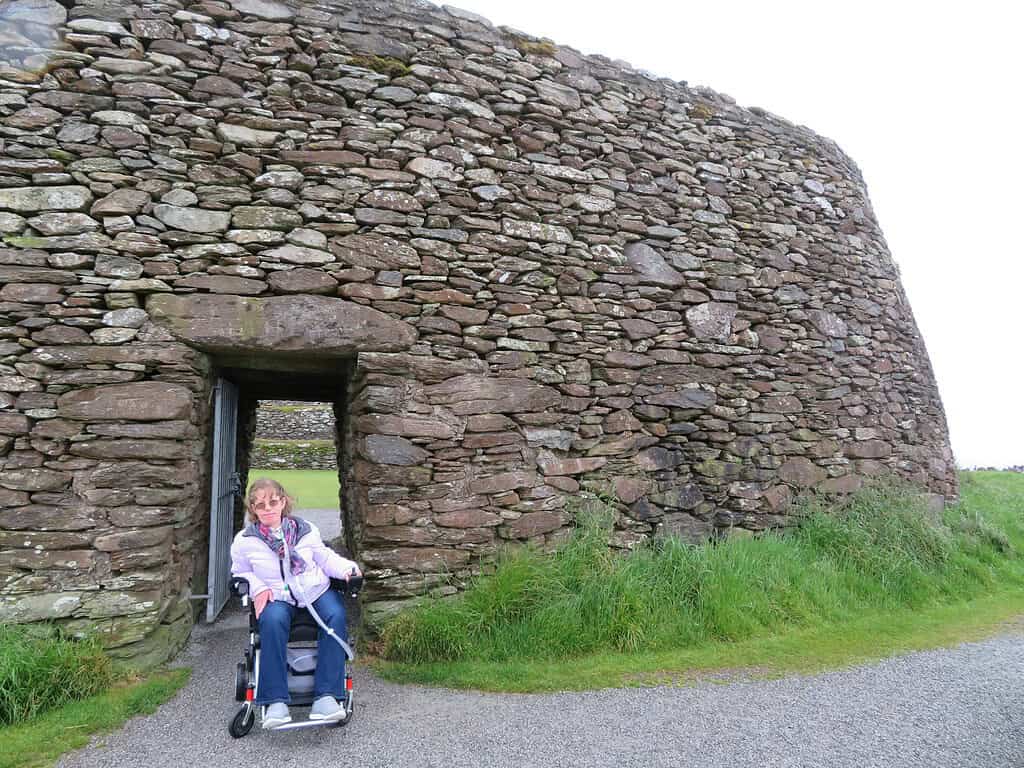
➡️ How Much Should I Tip in Ireland?
Tipping in Ireland is not the same as the United States. Generally tipping is not mandatory and is only given for good service.
For example, you would tip about 10% for a sit-down meal in a restaurant or pub as long as there isn’t a service charge already added to your bill. If you are in a larger group, you may bump the tip to 15-20%.
The other situation where you may want to tip is for a guided tour. However, there is some debate on how much this tip should be. For a day tour, consider 2-5 Euro as a recommended tip if the service is good.
➡️ Do I Need Cash in Ireland?
Most sit-down restaurants will accept credit cards as well as popular tourist attractions. However, some shops, smaller cafes, and other areas only accept cash. It’s a good idea to carry some cash in the local currency on you for when cards are not accepted.
Travel Tip: In Northern Ireland, the currency is Pounds Sterling while in the Republic of Ireland, they use the Euro.
Furthermore, if you are planning to visit more rural areas, make sure to visit the ATM before venturing out into the countryside as they may not be readily available. You are more likely to need cash in these areas as well.
➡️ Is the Water Safe to Drink in Ireland?
Yes, the water is safe to drink and tastes very good in Ireland.
➡️ Is Ireland Safe?
I have always felt very safe traveling in Ireland. However, like any other destination, be mindful of your belongings and do not leave valuables in your car. Likewise, especially in cities, be mindful of potential pickpockets and tourist scams.
Recap on Why Ireland is Worth Visiting
Ireland is a gorgeous country that offers wonderful options for history and music lovers, as well as those who love connecting with nature. Whether your are young, old, or have mobility problems, you are sure to find amazing things to do during your visit. And, if you’re like me, you’ll fall in love with the country and be quick to plan a return trip.

